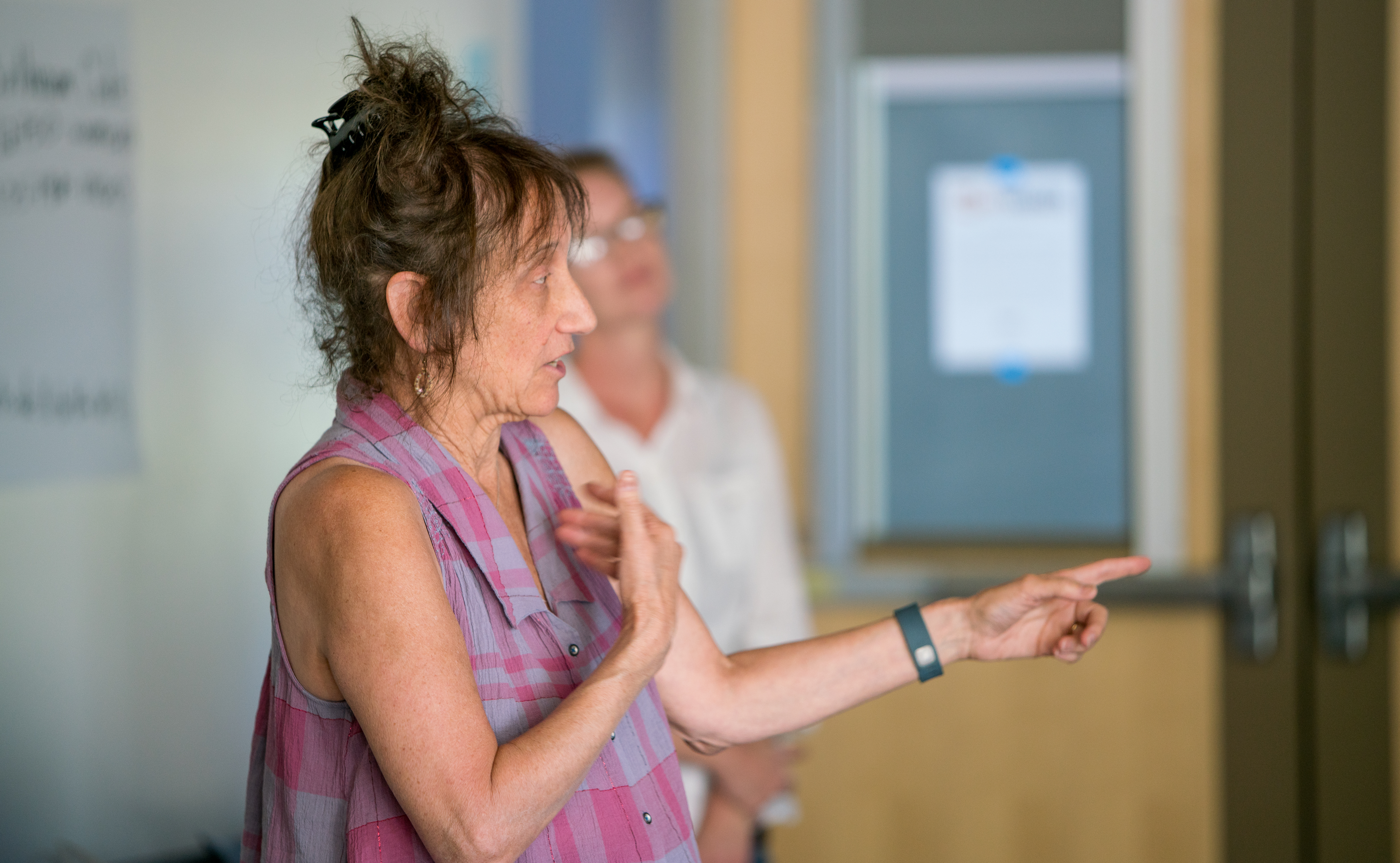Field Notes from Liz Lerman
I am interested in how we observe our processes, discern them as repeatable actions, develop them to become tools for others to borrow and make their own. I believe that we can harvest our histories, make sense of what we did and describe it in terms that help us understand the context, the decisions, and perhaps the wisdom and meaning surrounding the work.
Toolbox as Documentation
The topic for this salon is big. I am going to write about one small part of it. I am interested in how we observe our processes, discern them as repeatable actions, develop them to become tools for others to borrow and make their own. I believe that we can harvest our histories, make sense of what we did and describe it in terms that help us understand the context, the decisions, and perhaps the wisdom and meaning surrounding the work. At the same time we can delineate the data, information, formats, processes that may aid others in their work.
In my case, the idea for such a toolbox made from thousands of hours of teaching and choreographing and dancing came in an instant. It was a visitation born out of utter confusion and despair. As I was preparing to lead a workshop for K-12 teachers I was pondering why the organizing arts and educational institution with whom I was working wanted an outline from me that would describe what was to transpire. They wanted to hand it out at the beginning even though we all knew that the activities would change once I was in the room with the very particular people and needs that would coalesce that afternoon. It was true I had a plan, but it was equally true that the plan would shift as soon as we began our work.
While I sat there literally begging them not to make me do it, I saw in my mind, a large wall made of small cubicle shelves, each holding a description of one small piece of information that would be of use to the group assembled. By the end of the workshop we would have accumulated a sequence of these and thus the outline would emerge at the end, well documented and well understood by the teachers I was to be with that afternoon.
I began the idea for the toolbox, but also a way of thinking about methods derived from experience. Break the information down into small pieces, give people the pieces and let them use them and redesign them for their own purposes. This simple framework gave me a way of re-experiencing each new approach that we tried in community settings and each new choreographic idea that grew out of rehearsals. Once I realized we had the bit, the gem, the process, I could test it and retest it with different audiences and in different circumstances.

Liz Lerman Teaching.
Now some three decades later, I have many of these, of which only a few have been put to paper and appear in various forms such as the Dance Exchange’s tool box, or the Wesleyan University Science Choreography Website. It has been a long held dream that I make a more complete compilation giving context and multiple uses for the tools, as well as making a place for those using them to repost their discoveries or talk through their dilemmas. And I believe such a website, once built, could become the home to many people’s processes, methods, tools, and systems.
As I have thought about this over the years, the idea has also grown beyond the toolbox itself. I have come to see that there is a strong relationship between the existing tools, including the history that produced them, and the current projects including the necessity of documenting new approaches and new audiences. What I once thought of as an archival project, I now see needs to include and perhaps even begin with the current projects in order to capture the most up to date and salient features of the creative processes that others and I use in our practice(s).
When I talk about the toolbox to others I am often met with resistance. I think it is because people equate the tools to a recipe with the implication that repetition is bad, following another’s ideas is unoriginal, and that the whole set of ingredients might not fit the table we are setting. Maybe I just use recipes differently. I find the repetition that comes from testing an idea and a process over and over to be a powerful way to evolve my thinking and my understanding. I find when I trust the process I am in, I can pay more attention to the particular needs and demands of the situation in front of me. Because I am an inherent fixer, I rarely practice the method in its exactitude. And then of course, the very definition of being present in the moment means that there is always the possibility of change, and with those changes come a deeper understanding of the use of the tool itself. And most importantly, these tools are not meant to be proscriptive, but rather small pieces left for each user to sequence, adapt, and put to their own purpose.
Then I go home wishing I had a place to store the new date, to share the implications with others, and to read and discover what colleagues have done when faced with similar situations. I yearn for this toolbox, and this kind of documentation. I believe that descriptions, interpretations, shared knowledge and conversation could all flow from such a site.